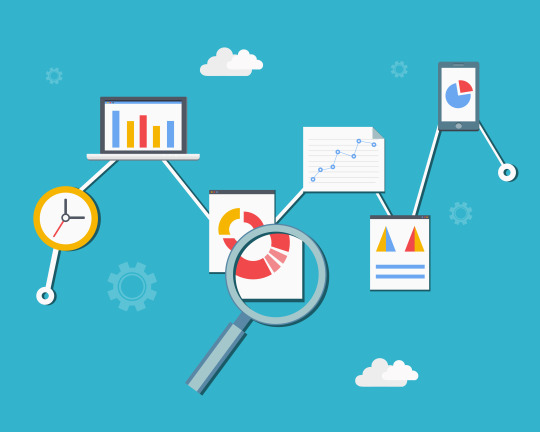#DataCompliance
Explore tagged Tumblr posts
Text
With increasing cyber threats and stringent regulations like HIPAA, GDPR, and SOC 2, securing patient data has become a top priority for SaaS (software as a service) healthcare companies.
#HealthcareData#CyberResilience#SaaSSecurity#DataCompliance#HealthTech#CyberSecurity#HIPAACompliance
2 notes
·
View notes
Text
Data sovereignty is reshaping digital governance. Federated models and AI-driven tools like Zubin ensure compliance and innovation in 2025.
0 notes
Text
Tachograph Download – Fast, Secure, and Compliant
Websat simplifies compliance with automated Tachograph Downloads remotely schedule and collect driver and vehicle data without manual effort. Stay ahead of EU regulations, reduce admin time, and avoid fines with this reliable, time-saving tool built for modern transport fleets.

#TachographDownload#FleetManagement#DrivingData#DataAnalytics#RoadSafety#TransportCompliance#LogisticsSolutions#VehicleTracking#DriverBehavior#digitaltacho#TransportTech#ElectronicTachograph#FreightManagement#ComplianceSolutions#SupplyChain#Transportation#SmartDriving#DataCompliance#TransportEfficiency#FleetTracking
0 notes
Text
Data Management Experts’ Tips for Effective Data Governance
Data visualization comes in various types, each serving different analytical purposes. Common forms include bar charts for comparing categories, line charts for showing trends over time, and pie charts for illustrating proportions. Scatter plots help identify correlations, while heatmaps reveal intensity or density in data. Choosing the right visualization type enhances clarity, insight, and decision-making Read More ..

0 notes
Text
Blog: What is Master Data Governance and Why Does Your Business Need It?
#MasterData#DataGovernance#BusinessNeeds#DataManagement#DataQuality#BusinessStrategy#DataIntegrity#DataSecurity#DataCompliance#DataGovernanceFramework#DataControl#BusinessGrowth#DataStandards#BusinessIntelligence#EnterpriseData#DataGovernancePolicy
0 notes
Text
Simplifying Data Privacy Laws: Easy-to-Follow Guidance

In today’s data-driven world, the importance of data privacy and ethics cannot be overstated. As organizations harness the power of big data to drive innovation and growth, they must also navigate the complex landscape of privacy concerns and ethical considerations.
This blog explores the key aspects of data privacy and ethics in the age of big data, offering insights and best practices to ensure responsible data management.
Understanding Data Privacy in Big Data-
Data Privacy Basics: Data privacy refers to the proper handling, processing and storage of personal information, ensuring that individuals’ data is protected from unauthorized access.
The Volume of Data: Big data involves collecting vast amounts of information from various sources, making it more challenging to ensure that all data remains secure and private.
Sensitive Information: Organizations must pay special attention to the handling of sensitive information such as health records, financial data, and personal identifiers.
Regulatory Compliance: Adhering to regulations like GDPR, CCPA, and HIPAA is crucial for maintaining data privacy and avoiding legal repercussions.
2. Ethical Considerations in Big Data-
Informed Consent: It’s essential to obtain clear and informed consent from individuals before collecting their data. Transparency about data usage is key.
Data Ownership: Who owns the data? Organizations must respect the ownership rights of individuals and ensure that their data is used in a manner consistent with their expectations.
Bias in Data: Big data algorithms can unintentionally perpetuate biases, leading to unfair outcomes. Ethical data management requires ongoing efforts to identify and mitigate these biases.
Data Minimization: Collecting only the data necessary for a specific purpose reduces the risk of misuse and enhances privacy.
3. The Role of AI and Machine Learning in Data Ethics-
Automated Decision-Making: AI and machine learning algorithms are increasingly used in decision-making processes. Ensuring that these algorithms are fair and transparent is critical.
Ethical AI: Implementing AI ethically involves considering the potential social impact, ensuring fairness, and avoiding discriminatory practices.
Data Anonymization: To protect privacy, data can be anonymized before analysis, ensuring that individuals cannot be re-identified from the data.
4. Best Practices to Ensure Data Privacy and Ethics-
Data Governance Framework: Establish a robust data governance framework that outlines clear policies and procedures for data management.
Regular Audits: Conduct regular audits of data practices to ensure compliance with privacy regulations and ethical standards.
Employee Training: Educate employees about data privacy and ethics to foster a culture of responsibility and awareness.
Transparency with Customers: Be transparent with customers about how their data is used, and provide them with options to control their information.
How Memetic Solutions Can Help?
At Memetic Solutions, we understand the critical importance of data privacy and ethics in today’s digital landscape. You can use comprehensive solutions to manage data responsibly.
Our experts guide you through the complexities of data privacy regulations, ensuring your business stays compliant with global standards.
Partner with Memetic Solutions to navigate the challenges of data privacy and ethics in the age of big data and ensure that your organization remains at the forefront of responsible data innovation.
#DataPrivacy#BigDataEthics#EthicalAI#DataGovernance#MemeticSolutions#DataCompliance#PrivacyByDesign#BigData#MachineLearningEthics#DigitalResponsibility
0 notes
Text
The Power of Data Quality Management
In today’s environment, data is the engine of any organization. The requirement to maintain data quality is becoming more and more important as organizations continue to gather ever-increasing amounts of data. A data manager or data organization can maintain high-quality information by implementing a set of techniques known as data quality management. This collection of procedures is used at every stage of the data handling process, from gathering to dissemination, implementation, and data analytics.
#DataQuality#DataManagement#QualityData#DataIntegrity#DataGovernance#DataAccuracy#DataStandards#DataCompliance#DataValidation#DataStewardship
0 notes
Text
Nurturing Data Excellence: A Comprehensive Overview Of Data Management Services
Effective data management services are imperative for businesses seeking to leverage the full potential of their data. Whether it’s through data standardization, profiling, database migration, or compliance, the strategic handling of data is a critical aspect of modern business operations. Partnering with EnFuse Solutions is a strategic move toward unlocking the true potential of your data assets.
#DataManagementServices#DataStandardization#DataProfiling#DatabaseMigrationServices#DataCompliance#EnfuseSolutionsIndia
0 notes
Text
Navigating a Cookie-Free Future: Customizing Digital Marketing Strategies
In the dynamic world of digital marketing, change is constant. Moving into the future, one of the most significant shifts facing marketers today is the move to a cookie-free environment. With growing privacy concerns and changing regulations, the era of relying on third-party cookies for tracking and targeting is coming to an end. In this blog post, we'll explore the concept of a cookie-free future, its implications for digital marketing, and strategies to adapt and thrive in this evolving environment.

The Cookie Landscape: A Brief Overview
Cookies have long been a drag on online tracking and targeting. These small pieces of data stored in users' browsers allowed marketers to gather information about user behavior, preferences, and interactions. This information, in turn, supported personalized advertising campaigns and optimized user experiences. However, growing concerns about privacy, user consent, and regulatory changes have led to a shift away from this traditional method of tracking.
The Rise of Privacy Regulations
Recent regulatory developments, particularly the General Data Protection Regulation (GDPR) and the California Consumer Privacy Act (CCPA), have focused attention on user data protection and privacy rights. These regulations have ushered in a new era of digital transparency, giving users more control over their personal data. As a result, third-party cookies, often used without the user's express consent, become obsolete.
Implications for Digital Marketers
A cookie-free future presents both challenges and opportunities for digital marketers:
Data Collection and Targeting: Marketers will need to find alternative methods for collecting user data and serving targeted ads as the traditional cookie-based approach becomes less effective.
Personalization: With limitations on data tracking, achieving a personalized user experience will require innovative strategies that respect user privacy while providing relevant content.
Measurement and Analytics: Metrics using third-party cookies, such as attribution and cross-device tracking, will need to evolve to provide accurate statistics in a cookie-free environment.
User Experience: As users become more privacy conscious, brands that prioritize transparent data practices and respectful user experiences will stand out.
Strategies for adapting to a cookie-free landscape
First-Party Data: Focus on collecting and using your own first-party data, obtained through direct interactions with users on your website or in your app. This data is more reliable and ethically obtained.
Contextual Advertising: A move towards contextual advertising, where ads are displayed based on the content of a web page rather than data about individual users.
Consent Driven Marketing: Obtain user's express consent to collect and use data. Implement robust consent management systems to ensure regulatory compliance.
Advanced Technologies: Explore advanced technologies such as machine learning and artificial intelligence to create predictive models that can predict user preferences without invasive tracking.
Collaboration and Partnerships: Partner with publishers and platforms that prioritize user privacy and ethical data practices.
Embrace a Privacy Policy: Position your brand as a champion for user privacy by being transparent about your data practices and respecting user choices.
Conclusion
A future without cookies represents a key moment in the evolution of digital marketing. While change may seem challenging, it also represents a unique opportunity to build more meaningful and considerate relationships with users. By adapting your strategies to meet user expectations and privacy regulations, you can navigate this environment with confidence and continue to deliver valuable experiences to your audience. Embrace this shift and let it inspire you to innovate and discover new ways to connect and engage in a cookie-free world.
#CookielessFuture#PrivacyFirst#DigitalMarketingShift#AdaptAndThrive#DataPrivacy#UserExperience#FirstPartyData#ContextualAdvertising#ConsentDrivenMarketing#EthicalDataPractices#PersonalizationStrategies#InnovativeMarketing#UserPrivacy#MarketingRegulations#DigitalTransformation#UserConsent#DataCompliance#TransparentMarketing#BrandTrust#MarketingInnovation
0 notes
Text
How do you ensure data consistency across various systems and databases within an organization?
Ensuring data consistency across various systems and databases within an organization is crucial for accurate reporting, effective decision-making, and smooth business operations. Data consistency can be achieved through various techniques and best practices, including:

Data Integration and Centralization: Implement a robust data integration strategy to centralize data from different sources into a unified data repository or data warehouse. This ensures that all systems and applications within the organization access and update a single, authoritative source of data.
Master Data Management (MDM): Utilize Master Data Management solutions to create and maintain a master record of critical data entities (e.g., customers, products) that are shared across different systems. This helps in ensuring consistent and standardized data across the organization.
Data Standardization: Enforce data standardization practices to ensure uniformity in data format, naming conventions, and data definitions across various systems. This reduces the risk of data inconsistencies arising from variations in data representation.
Data Quality Management: Implement data quality management processes to identify and resolve data quality issues. Regular data quality checks and cleansing activities help maintain consistent and accurate data.
Data Governance: Establish a data governance framework that defines data ownership, data stewardship, and data management policies. This ensures that data consistency measures are implemented and monitored effectively.
Data Validation Rules: Define and enforce data validation rules and constraints for each data attribute in the databases and systems. These rules should check data integrity and enforce business rules to maintain consistency.
Transaction Management: Implement transaction management mechanisms to ensure that changes to data across multiple systems are carried out in a controlled manner. Transactions help maintain data consistency even in the event of system failures or errors.
Real-time Data Replication: Use real-time data replication technologies to synchronize data across databases and systems in real-time. This ensures that the most up-to-date information is available uniformly across the organization.
Change Management Processes: Implement change management processes to govern any modifications to data structures or data-related processes. These processes help maintain data consistency during system upgrades or changes.
Data Versioning and Timestamps: Implement version control and timestamps to track changes to data over time. This allows for easy identification of the most recent data and helps maintain data consistency in historical records.
Regular Data Audits: Conduct periodic data audits to identify any discrepancies or inconsistencies in data across systems. Address any identified issues promptly to maintain data consistency.
Training and Awareness: Train employees on data consistency best practices and the importance of data integrity. Awareness among staff helps minimize human errors and improves adherence to data consistency guidelines.

By combining these strategies, organizations can ensure data consistency across their various systems and databases, enabling reliable and accurate data for better decision-making and operational efficiency.
#DataIntegrity#DataQuality#DataAccuracy#DataConsistency#DataReliability#DataValidation#DataAudit#DataTrust#DataProtection#DataGovernance#DataSecurity#DataCompliance#DataManagement#DataPrivacy#DataTransparency#DataVerification#DataConfidentiality#DataAnalytics#DataInsights#DataDriven
0 notes
Text
Data retention compliance ensures proper data storage, archiving, and deletion per legal standards. It reduces risk, cuts storage costs, and boosts audit readiness through automation.
0 notes
Text
Tachograph download

Websat simplifies compliance with its automated Tachograph Download feature. Schedule and collect driver data remotely, stay ahead of legal obligations, and reduce manual workload. A reliable, time-saving tool for any transport business managing EU tachograph rules.
#TachographDownload#FleetManagement#DrivingLogs#DigitalTachograph#TachographData#DataCompliance#TransportSafety#DriverHours#RoadTransport#VehicleTracking#FleetSafety#LogisticallyFit#TransportationSolutions#BusinessEfficiency#tachordata#TachographAnalysis#RegulatoryCompliance#TransportTechnology#SmartLogistics
0 notes
Text
Metadata: 100 Guide to Understanding and Leveraging Data About Data

In this age of digitization, data has taken the place of gold. However, the component known as metadata is what gives this gold its actual value. This article will take you through the exciting world of metadata, illuminating its meaning, various types, examples, purpose, and other information.

Metadata Metadata is a phrase that frequently comes up in conversations about big data, data management, and data science. And what exactly makes it so vital? This tutorial aims to provide an in-depth review of metadata and its function in the contemporary data landscape, to answer the issues posed here and others.
What Exactly Does It Mean to Have Metadata?
Metadata, sometimes known as 'data about data,' is information that either describes, locates, or in some other way makes it simpler to obtain, utilize, or manage data. Metadata is a collection of data that, in addition to providing information about other data, also characterizes that data. A digital image may, for instance, contain metadata that portrays the picture in terms of its size, color depth, image resolution, when it was made, and a variety of other data. The metadata associated with a text document may include information such as the document's length, the author's name, the date the document was created, and a concise description of the document's content.
An Analysis of the Development of Metadata from a Historical Standpoint
The idea of metadata has been around for quite some time. It dates back to the beginning of structured collections of knowledge and has been around ever since. Metadata has always been essential to the rapid and easy retrieval of information, whether in the form of library card catalogs or the digital tags used on contemporary websites. In the past, metadata was mainly utilized in libraries and archives to catalog papers and other items and retrieve them when needed. The usage of metadata has become substantially more widespread with the introduction of the internet and other forms of digital technology. Nowadays, metadata is utilized in various sectors, including digital libraries and databases, websites, and social media platforms, to name just a few examples.
The Importance of Metadata in Today's World and the Functions It Serves
Metadata is vital in the data-driven society that we live in today. It is helpful for various data-related tasks, including data management, data integration, data mining, and data governance. The metadata is responsible for making the data understandable and usable. Metadata has a wide range of applications in the area of digital computing. Metadata is used by search engines so that they can comprehend the content of web pages and produce more accurate results. Metadata is the information digital cameras store regarding capturing a photograph. Social media networks use metadata to organize and classify postings.
What Kinds of Things Might Be Considered Metadata?
There is metadata in everything. The information, such as the date, time, location, and even the camera settings, are saved as metadata whenever you snap a picture with your smartphone. Examples of metadata include the artist's name, the song title, the album name, and the genre of a music file. In Everyday Life: Examples of Common Uses for Metadata Metadata is an essential component of everything we encounter in our lives, from the books in a library to the posts on social networking websites. It enables us to locate, organize, and comprehend information rapidly and effectively. For instance, when you use a search engine to locate material online, you use metadata. The search engine analyzes metadata to comprehend the content of web pages and return results pertinent to the query. When you take a picture with your digital camera, the camera records information about the image. This metadata includes the date and time the photo was taken, the camera settings, and if your camera has a GPS feature, the picture's location. This metadata may be utilized later to categorize your photographs, locate specific graphics, or even understand the conditions when the image was shot.

The Role Of Metadata In The Online World The Role of Metadata in the Online World: Illustrations from the Tech Sector In the realm of information technology, metadata may serve many purposes. Websites, for instance, will often include metadata in meta tags to convey the page's subject matter to search engines. Databases employ metadata to give a roadmap to their material. Metadata describes other information; for instance, the structure of a database, the types of data kept in the database, and how the data is arranged may all be described using metadata. It is possible to utilize this information to understand the structure of the database, compose queries that will obtain data from the database, and manage the data stored in the database.
Which Three Different Types of Metadata Are Correct?
It is possible to divide metadata into three distinct types: descriptive, structural, and administrative. The Secret to Discoverability Lies Within Descriptive Metadata Metadata that is descriptive contains things like the title, abstract, author, and keywords, all of which contribute to the process of locating and identifying data. The purpose of this kind of metadata is to give information that can assist in finding and distinguishing the data. For instance, a book's title, author, and keywords are all examples of descriptive information that might help you locate the book in a physical location such as a bookshop or library. The blueprint for data organization is known as structural metadata. The organization, structure, and kinds of data can be better understood with the help of structural metadata. It is a way of describing the arrangement of the individual parts of a dataset or item. For the sake of illustration, structural metadata for a book might include details such as the sequence in which the chapters are presented, the total number of pages, and the connection between the branches and the book. Administrative metadata is known as the keeper and protector of data rights. Administrative metadata may be used to administer a resource, such as the date and method of creation, the kind of file and any other relevant technical information, and the users authorized to use the help. The management and administration of data make use of this kind of metadata. An example of administrative metadata for a digital image may include: The image's creation date. The program used to make the image. The rights and permissions are connected with the idea.
What is the Most Important Role That Metadata Plays?
The primary function of metadata is to make it easier to find important information, to make data administration more efficient, and to safeguard information so that it may be preserved. Improving the Capability to Discover Data: The Part Played by Metadata Metadata improves the discoverability of data by giving helpful information about the material. It assists users in locating the pertinent facts at the appropriate moment. When you use a search engine, for instance, to obtain information on the internet, the search engine uses metadata to interpret the content of web pages and offer search results relevant to your query. Facilitating Data Management: How Metadata Contributes By giving a context for the data that has been saved, metadata makes data administration much more effortless. It assists in integrating data, ensuring data quality, maintaining data stewardship, and managing data operations. For instance, metadata may be utilized in a database to understand the structure of the database, compose queries for retrieving data, and collect the data kept inside the database.

The Value Of Metadata In Protecting Users' Personal Information And Private Data The Value of Metadata in Protecting Users' Personal Information and Private Data Metadata is essential in protecting users' privacy and keeping their data secure. It explains who can access the data, where it should be housed, and how it should be safeguarded from unauthorized access. For instance, administrative metadata could contain information about the rights and permissions associated with a specific piece of data. This kind of information can control who has access to the data and what they are allowed to do with it by holding who has access to the data and what they are allowed to do with it.
The Value of Metadata in many Different Fields
Metadata is not only an idea; instead, it is a potent instrument that drives insights and choices across a variety of areas. In data science, metadata is the engine that drives insights and predictions. In data science, metadata is information about data that helps researchers understand the data better. It facilitates data analysis, data visualization, and data mining. In a dataset, metadata can offer information about the variables, their kinds, and their relationships. This information can be found in a dataset, which can be used to pick the proper analytic techniques and accurately interpret the findings. Informing Strategic Decisions Through the Use of Metadata in Business Intelligence In the realm of business intelligence, metadata is what supplies the context, which in turn enables more informed and effective strategic decision-making. It helps integrate data, manage data warehouses, and do data analytics. In a business intelligence system, for instance, metadata may be utilized to understand the structure of the data warehouse, compose queries to obtain data for use in reports and dashboards, and correctly interpret the results of those searches. The role of metadata in data warehousing is to simplify storing and retrieving data. Metadata is utilized in data warehousing to facilitate effective data organization, location, and retrieval. It enables data storage, data transfer, and data lifecycle management. For instance, in a data warehouse, metadata may be used to understand the structure of the warehouse, the types of data that are kept in the warehouse, and how the data is arranged. This understanding can then be used to effectively manage the data stored in the warehouse and efficiently retrieve data.
The Problems and the Answers in the Field of Metadata Management
Metadata is helpful, but keeping track of it has its own unique set of issues. Nevertheless, one can triumph over these obstacles by employing the appropriate tactics and resources. The Most Frequently Encountered Problems in Metadata Management and How to Fix Them Problems with data quality, a lack of standards, and worries about data security are some of the more prevalent obstacles associated with managing metadata. The implementation of data quality measures, the adoption of metadata standards, and the enforcement of data security regulations are all potential solutions. Implementing data quality procedures such as data validation, cleansing, and auditing solves data quality problems. Adopting metadata standards that establish criteria for the generation, usage, and administration of information can solve the problem of a need for more standardization. Concerns about data safety can be alleviated by implementing data security rules that restrict access to metadata, shield it from illegal access and change, and protect it from exposure to potential threats.
Guidelines for Efficient and Effective Management of Metadata
Implementing best practices for metadata management, such as setting explicit metadata policies, utilizing tools for metadata management, and routinely updating and evaluating metadata, is necessary to manage metadata effectively. It is possible to guarantee that metadata is generated, utilized, and maintained in a manner that is consistent and successful by defining explicit metadata policies and putting them into place. Using metadata management solutions may assist in automating the process of creating, utilizing, and managing metadata, making the process more time-effective and less prone to mistakes. By evaluating and updating it regularly, it is possible to guarantee that metadata will continue to be accurate, relevant, and valuable. Trends and Forecasts Regarding the Development of Metadata: As we progress toward a future driven more and more by data, the metadata function will become even more critical. Emerging Trends in Metadata Management The use of artificial intelligence and machine learning in metadata production and administration is one example of an emerging trend in metadata management. Other examples include the rising relevance of metadata in data governance and the rise of metadata in the era of big data and the Internet of Things. It is possible to employ AI and machine learning to automate the metadata production and administration process, resulting in increased productivity and precision. Metadata is gaining more attention due to the rising significance of data governance since it offers the context and understanding necessary to regulate data successfully. The advent of big data and the Internet of Things is leading to an explosion in the quantity of metadata since every piece of data created by these technologies comes with its own information set. This explosion in the amount of metadata is leading to an explosion in the number of data.
The Prospects for Metadata Soon: Predictions and Anticipations
The future of metadata has a lot of potential. The value of metadata in data management and the decision-making process is expected to expand exponentially due to technological developments and increased awareness of the significance of data. The need for efficient metadata management will only grow as we continue to produce and consume more data in the future.
Summary: The Crucial Part That Metadata Plays in Today's Data-Driven World
In a world driven by data, metadata is an instrument that cannot be ignored. It gives the data context, making it more intelligible and valuable. Metadata is essential in all aspects of data science, business intelligence, and data warehousing, playing a necessary part in generating insights, forming choices, and optimizing business processes. Because the significance of metadata is expected to increase as we go closer to the future, it is a subject that is well worth investigating and becoming knowledgeable about. Metadata is more than just 'data about data.' It is the essential element that enables data to realize its full potential. By giving context, metadata makes data relevant and valuable. It allows us to locate the appropriate data at the right moment, comprehend the data we already have, and make educated decisions based on our data. Metadata is becoming more significant in big data, characterized by an unprecedented increase in data amount, variety, and velocity. The metadata assists us in navigating the immense ocean of data, locating the information we require, and making efficient use of it. The need for efficient metadata management will only grow as we continue to produce and consume more data in the future. The difficulties associated with managing metadata are accurate, but they can be surmounted with the appropriate approaches and technologies. We can guarantee our metadata's precision, use, and relevance if we implement the most effective procedures for managing metadata. The outlook for metadata in the future is quite positive. The value of metadata in data management and the decision-making process is expected to expand exponentially due to technological developments and increased awareness of the significance of data. Understanding the power of metadata and using it effectively will be essential to our progress as we move toward a future that data will drive. Read the full article
#BusinessIntelligence#DataAnalysis#DataCompliance#DataGovernance#DataInfrastructure#DataIntegration#DataLifecycle#DataManagement#DataMigration#DataMining#DataOperations#DataPrivacy#DataProcessing#DataQuality#DataScience#DataSecurity#DataStandards#DataStewardship#DataStorage#DataStrategy#DataSystems#DataTransformation#DataVisualization#DataWarehousing#Metadata
0 notes
Text
What is Master Data Governance and Why Does Your Business Need It?
The digital world is built on the foundation of data in today's time. Master Data Governance (MDG) is a strategic approach to managing and organizing an organization’s critical data assets. It guarantees that the data remains current, consistent, and protected across the enterprise. At Vupico, we are experts in providing innovative data governance solutions that are relevant to your business.
Understanding Master Data Governance
Master Data Governance is the scheme, rules and procedures with which master data, the key data that is central to business operation, is overseen and regulated. This covers customer data, product information, supplier information, and others. A single source of truth, as provided by an effective MDG, facilitates informed decision making for business and operational efficiency.
Why Your Business Needs Master Data Governance
Enhanced Data Quality: Low quality of data can cause errors, inefficiencies, and missed opportunities. MDG guarantees data correctness and uniformity, which prevents costly errors in business.
Improved Decision-Making: Trustworthy data facilitates improved analytics and understanding which, in turn, empowers leaders to develop strategic decisions that ignite growth.
Regulatory Compliance: Due to the increasing data privacy laws, MDG guarantees compliance by preserving data integrity and security.
Operational Efficiency: Streamlined data management (reduces redundancies and increases collaboration between departments) that saves time and finance.\
Customer Satisfaction: The correct information of the customers enables us to, at the same time, provide personalized experiences and trust, and to strengthen customer relationships.
How Vupico Can Help
At Vupico, we know that commercial entities struggle with orchestrating complex data ecosystems. Our Master Data Governance solutions are designed to:
Assess and Plan: Assess your existing framework for data governance and pinpoint potential areas for development.
Implement Policies: Establish targeted policies and procedures to ensure data accuracy and security.
Leverage Technology: Leverage state-of-the-art tools to automate data management and deliver real-time insights.
Provide Ongoing Support: Provide continuous monitoring and updates to changing business requirements.
Get Started with Vupico Today
Master Data Governance is not only about data management, but also about freeing the potential of data for business success. Using Vupico's experience, you can gain smooth data integration, better compliance, and useful insights.
Explore www.vupico.com and discover our services and how we can empower your organization to succeed in a data-driven world.
© 2024 Vupico SDP. All rights reserved.
#MasterDataGovernance#DataGovernance#DataQuality#BusinessEfficiency#DataCompliance#DataSecurity#DecisionMaking#OperationalEfficiency#CustomerSatisfaction#DataManagement#DataIntegration#VupicoSDP#BusinessGrowth#DataDriven#DataInsights#RegulatoryCompliance#DataPrivacy#DataAutomation#DataEcosystem#BusinessSuccess#Vupico
0 notes
Text
Ensure your business stays compliant and secure with our Data Compliance Service. Discover more: https://www.sun.com.bd/regulatory-and-compliance/data-compliance-service/ #DataCompliance #BusinessSecurity #RegulatorySolutions
0 notes
Text
Mobile Device Management Market to Reach $15.4 Billion by 2033, Expanding from $5.5 Billion in 2023 at a 10.5% CAGR
Mobile Device Management (MDM) market is rapidly expanding as businesses face increasing challenges in managing the security and functionality of mobile devices. With the surge in remote work and the growing reliance on mobile solutions, companies are seeking advanced MDM solutions to ensure data security, privacy, and compliance across their mobile fleets. MDM solutions allow IT teams to monitor, manage, and secure smartphones, tablets, and laptops, protecting against data breaches, malware, and unauthorized access. As the shift to a mobile-first workforce continues, the demand for sophisticated, scalable, and efficient MDM tools is soaring, particularly in industries such as healthcare, finance, and retail, where data security is paramount.
To Request Sample Report : https://www.globalinsightservices.com/request-sample/?id=GIS20061 &utm_source=SnehaPatil&utm_medium=Article
The market is expected to witness significant growth driven by advancements in AI, machine learning, and cloud computing, which are enhancing MDM solutions with predictive analytics and automation. These technologies are improving device management and enabling proactive security measures. As businesses embrace Bring Your Own Device (BYOD) policies and integrate mobile solutions into their digital transformation strategies, the need for robust MDM systems is more critical than ever. With cyber threats becoming increasingly sophisticated, MDM solutions are evolving to address emerging challenges, ensuring businesses can securely manage their mobile device ecosystems. The Mobile Device Management market is set to continue its upward trajectory, offering innovative solutions for businesses to stay ahead in a rapidly evolving digital landscape.
#MobileDeviceManagement #Cybersecurity #MobileSecurity #MDMsolutions #EnterpriseMobility #DataProtection #DigitalTransformation #MobileSecuritySolutions #BYOD #CloudSecurity #RemoteWork #DataCompliance #TechInnovation #MobileDevices #MobileManagement
0 notes